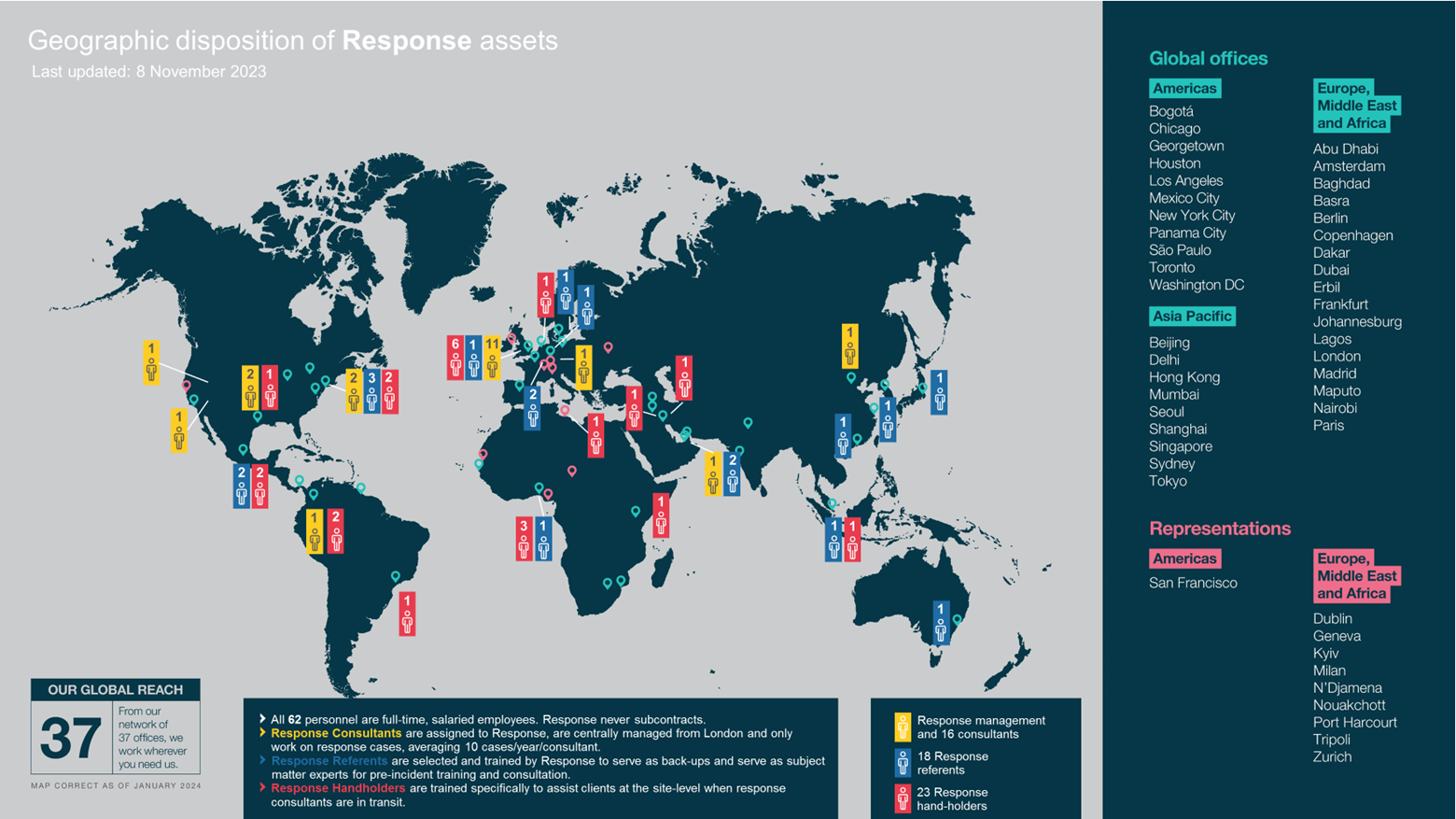Construction-Focused Riskopolis Series

Can you spot the environmental risks hiding in the scene below? Take a closer look at each one by clicking on the numbers.
HVAC, Plumbing & Mechanical Contractors
- While installing a new HVAC system in an old office building, HVAC contractor Harry used a hole saw to cut through a section of the ceiling. He was unaware that the saw had inadvertently disturbed and released asbestos-containing insulation material. As a result, Harry had to pay for cleanup costs for the asbestos fibers released throughout the building.
- Harry the HVAC contractor was installing a new system on the rooftop of an office building. In the process of installation, he disturbed a nest of hornets that began swarming the vicinity of his work. To protect himself, he sprayed an insecticide, which flowed into the new office building’s HVAC system. Several tenants became ill due to an allergic reaction to the insecticide. Bodily injury claims were made.
- While installing a new HVAC unit in an office building, Harry, the HVAC contractor, improperly constructed the system which caused mold growth in a portion of the building. The facility was forced to relocate several employees during the repair of the system, and the renovation of the moldy building materials. A claim for cleanup costs was filed.
- Following a power outage, a musty smell was present at an office facility. Air testing revealed elevated levels of mold in the production areas of the facilities due to the HVAC system. They were required to remediate the mold and to shut down business operations for several days.
- Several office employees became ill from legionella. The legionella was caused by improper duct sealing during the installation of a new HVAC unit, which allowed condensation to build up. The employees brought suit against the property owner and Harry the HVAC contractor.
- Mike, the mechanical contractor, had installed two emergency generators at an office building. Shortly after the building performed routine maintenance on the generators, one of the day tanks began to overflow due to a sticking valve. Extensive cleanup costs resulted due to the porosity of the soil and the close proximity of groundwater.
- Pamela, the plumbing contractor, was working on renovations for an office building. Unfortunately, during renovations, Pamela installed the incorrect size roof drain. The diameter of the installed drain could not handle the volume of water generated during a rainstorm. Because of this, the rainwater overflowed and pooled on the roof, eventually leaking into the interior, resulting in water damage and mold growth.
Utility Contractors
- Sally the sewer contractor was hired by a municipality to replace sewer lines under a busy inner-city intersection. Electric, gas, and water utility operators marked out their underground lines on the street; however, as Sally started to drill through the ground, she struck a gas distribution line, causing a gas release into nearby residences and businesses. As a result of the release, emergency responders required residents and surrounding businesses to evacuate the area. The gas utility operator later arrived at the scene, to clamp off the gas line and perform emergency repairs. Sally was held responsible for costs associated with neutralizing the gas release, and the bodily injury suffered by nearby tenants.
- Gary the gas contractor was contracted to replace a natural gas distribution line. In his materials and equipment staging area, Gary was using an onsite aboveground storage tank to store fuel for his equipment. One morning, upon his arrival to the job site, Gary discovered that vandals had shot a hole in the refueling tank causing several gallons of diesel fuel to be released onto the soil. Gary was responsible for the cleanup.
- Eric the electrical contractor was hired by a telecommunications company to install underground fiber optic cables. While excavating the cable trench, the contractor struck an underground fuel oil storage tank that had not been properly marked. Two hundred gallons of fuel oil was released into the surrounding soil. Eric was responsible for the cleanup.
- Sewer contractor, Sally was contracted to clean and remove sediment from a sewage system. While cleaning the line, raw sewage was released and seeped into the water filtration system of a neighboring property. The water filtration system became contaminated with coliform and E. Coli. As a result of the damage Sally caused, she was responsible for cleanup of the sewage, and the extensive losses suffered by neighboring company to address the impacts to its water treatment plant.
- Electrical contractor Eric was installing a fiber optic cable network and broke through a concrete sidewalk panel in order to construct a vault in accordance with project designs. In the course of breaking through the concrete, Eric unknowingly damaged the foundation of an adjacent building. The damage allowed rainwater to seep into the building, impacting the asbestos insulation in the basement. The basement area had to be isolated and remediation was performed to remove the asbestos insulation.
- Gary the gas contractor, was contracted to install natural gas lines as part of a new office building development project. Gary left a trench open over the weekend. Heavy rains washed away erosion controls, allowing soil and sediments to be released from the trench and into the adjacent bay. Gary was subsequently fined by a regulatory agency for the discharge and natural resource damage resulting from the release.
Heavy Highway, Street & Bridge Contractors
- Benny, the bridge contractor, performed abrasive sandblasting on a bridge located near a residential area. Lead paint chips and dust from the sandblasting became airborne and migrated onto residential properties, requiring costly clean-up measures.
- Helen was hired for a project that involved re-striping a section of a highway. On the way to the jobsite the truck carrying a load of paint, containing titanium dioxide, overturned. The paint spilled into a nearby creek. In response, Helen the highway contractor immediately engaged her Great American Response and React Program by calling the emergency response hotline, and the spill was contained by CURA Emergency Services.
- However, due to the sensitive nature of the area where the spill occurred, substantial clean-up and environmental monitoring were necessary. A claim was made for clean-up costs and civil fines were imposed as a result of the natural resource damage.
- During construction activities, a crane being used to lift concrete barriers overturned. The accident ruptured the crane’s hydraulic hoses, spilling hydraulic fluid onto the ground. Steve, the street contractor, was required to pay for clean-up costs arising from the spill.
- Benny, the bridge contractor, was demolishing a small overpass as part of a roadway expansion project when he encountered asbestos-containing materials (ACM). Proper controls and air monitoring were put in place, but a neighbor later complained that ACM dust had entered the HVAC system of their home. Testing of the HVAC system revealed small amounts of ACM dust. To remove it, filters at the neighboring property had to be replaced and the ducts required cleaning at a significant cost. A claim was made for the clean-up expenses and considerable legal fees were incurred.
- Steve, the street contractor, was hired to re-pave a large section of road. During the project, one of Steve’s dump trucks accidentally backed into a mobile refueling tank. The accident ruptured the tank and released 300 gallons of diesel fuel, which spilled onto the ground surface and into a nearby storm drain.
- Failure of inadequate erosion control measures, which were installed during a highway overpass abutment project, caused petroleum-impacted sediment to wash into a pristine waterway. Helen, the highway contractor, was responsible for installation and maintenance of the erosion control measures and was required to pay for clean-up costs, governmental fines and natural resource damages.
Coverage examples are for illustrative purposes only. All coverage is subject to underwriting.














